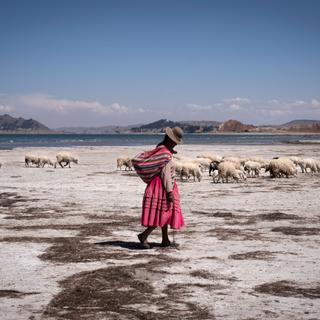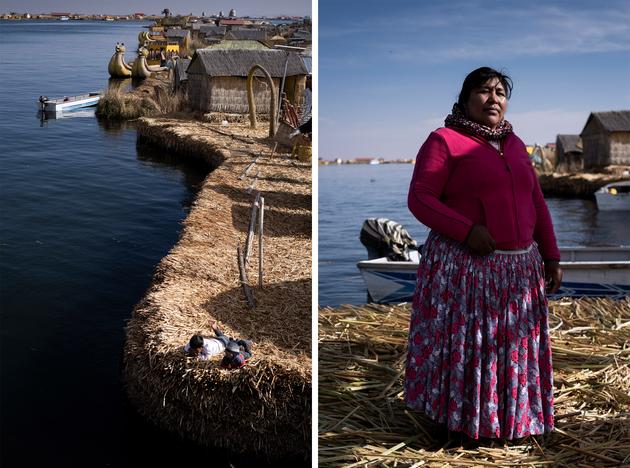


On the border between Peru and Bolivia, Lake Titicaca is suffering from historic drought
FeatureThe transboundary lake, the highest freshwater lake in the world on which 3 million people depend, has receded by up to 2 kilometers in some spots. The cause: An exceptional rain deficit and the impact of deforestation in the Amazon.
Every day, Marta Quispe stares at the sky. She feels the rain: "It gets near, wants to fall and then leaves, carried away by the clouds," lamented the lined-faced woman living on the Uros archipelago on the Peruvian side of Lake Titicaca, whose waters are shared by Peru and Bolivia. Around her, the immensity of the lake makes it look like an inland sea: 950 cubic kilometers of freshwater reserves and a gust of wind blowing across a dishearteningly clear sky. While making for beautiful scenery, this deep blue is now a cause of despair for the three million inhabitants living on and around the islands.


Lake Titicaca, the highest freshwater lake in the world, located at 3,810 meters above sea level on the edge of the Andean Altiplano plateau, is facing one of its worst droughts in 80 years. On some shores, the water has receded by up to 2 kilometers, revealing white sandbanks and cracked earth which, on the outskirts of towns, are littered with plastic waste.
At this time of year, the fields surrounding the lake should have tinted green by the first sparse rains before the rainy season begins in earnest in December until March or April. But in October, everything was hopelessly dry: the grass yellowed, the soil dehydrated and temperatures at record levels for the Andean Altiplano.
Palpable concern
"We're faced with an exceptional situation and entering a period of extreme drought reminiscent of 1943," commented an affable Juan José Ocola in his office in La Paz, some 100 kilometers southeast of the lake. He is the director of Lake Titicaca's binational autonomous authority, a decision-making body run by the two Andean countries. In 1943, a lack of rainfall led the lake to reach its lowest level ever: minus 2.5 meters. "Thousands of people were forced to migrate" to the cities, he explained, as agricultural production collapsed. The lake and the river system feeding it had lost its ability to ensure the region's food and water security.
This extreme situation has nogt arrived yet, but the drought's repercussions are being felt by the inhabitants, who rely on livestock – 10 million head of cattle and alpacas to feed – subsistence farming and tourism.
A palpable sense of concern has taken hold of the population of the Uros islands, a group of around 100 micro-islands made of floating reed and inhabited by ethnic groups of the same name – the lake's oldest inhabitants – as well as by Aymara populations. They are among those most affected by the lack of rain, as their whole way of life depends on the lake.
You have 75% of this article left to read. The rest is for subscribers only.


